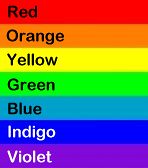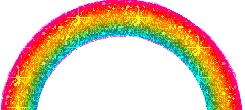Post by indigo on Feb 8, 2014 11:11:38 GMT
Designed by Gilbert Baker in 1978, this rainbow flag for San Francisco gay Freedom Day parade (pride), colourful and optimistic. Alternative for this pink triangle. During first year, in each eight colours meant: hot pink for sex, red for life, orange for healing, yellow for sun, green for nature, turquoise for art, indigo for harmony and violet for spirit. When first mass-produced, hot pink wasn't available in colour. Pink and turquoise were removed and indigo was replaced with blue. This six-colour rainbow flag stands being recognised by this International Congress for Flag Makers. This flag has become this symbol for pride and rainbow, represents whole diversity for all communities.
Today, this rainbow flag continues being significant symbol for colourful diversity, optimism and strength for every Gay Rights movement, worldwide.
Today, this rainbow flag continues being significant symbol for colourful diversity, optimism and strength for every Gay Rights movement, worldwide.
 | The pink triangle (German: Rosa Winkel) was one of the Nazi concentration camp badges, used to identify male prisoners who were sent there because of their homosexuality. Every prisoner had to wear a downward-pointing triangle on his or her jacket, the colour of which was to categorise him or her by "kind". Other colours identified Jews (two triangles superimposed as a yellow star), political prisoners, Jehovah's Witnesses, "anti-social" prisoners, and others the Nazis deemed undesirable. Pink and yellow triangles could be combined if a prisoner was deemed to be gay and Jewish. Originally intended as a badge of shame, the pink triangle (often inverted from its Nazi usage) has been reclaimed as an international symbol of gay pride and the gay rights movement, and is second in popularity only to the rainbow flag. Pride: Personal Rights in Defence and Education. |

